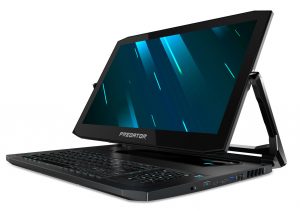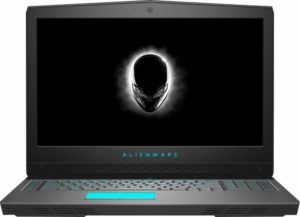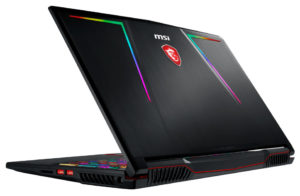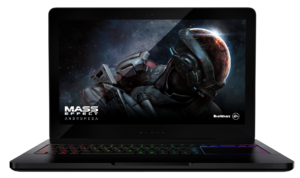NVIDIA GeForce RTX 2080 (8GB GDDR6) vs NVIDIA GeForce GTX 1080 (8GB GDDR5X) – long live the new King
 Ready, set… Go! This is the showdown of two kings – two real behemoths of graphics cards, ruling their generation. For a couple of years, GTX 1080 was the one and only king of laptop graphics cards. However, since not a while ago, the successor to the throne came out of the shadows, it is only natural for us to compare them head to head. Of course, since they are laptop GPUs we have to make a choice for devices. In the Red corner, weighing 4.4 kg is a giant coming straight from the valleys of Texas – the Alienware 17 R5. In the Blue corner, around the same category but born in the busy streets of Taipei, Taiwan – Acer Predator Triton 900. First, let’s get some more information about today’s competitors.
Ready, set… Go! This is the showdown of two kings – two real behemoths of graphics cards, ruling their generation. For a couple of years, GTX 1080 was the one and only king of laptop graphics cards. However, since not a while ago, the successor to the throne came out of the shadows, it is only natural for us to compare them head to head. Of course, since they are laptop GPUs we have to make a choice for devices. In the Red corner, weighing 4.4 kg is a giant coming straight from the valleys of Texas – the Alienware 17 R5. In the Blue corner, around the same category but born in the busy streets of Taipei, Taiwan – Acer Predator Triton 900. First, let’s get some more information about today’s competitors.
You can have a look at our Top Laptop Graphics Ranking to see these cards and even more.
Specs overview
Despite some three year difference between the graphics cards, there are some similarities. However, they start and finish with the amount of memory (8GB), the width of the bus (256-bit) and the power they need – 150W.
Expectedly, the Turing chips are coming at a smaller manufacturing process – 12nm against 16nm of the Pascal graphics cards. Additionally, the RTX 2080 packs around 16% more CUDA cores – 2944 against 2560. However, the GTX 1080 has a higher base and Boost frequencies of 1556/1746 MHz against the 1380/1590 MHz of the newer chip. Of course, since it is a laptop hardware it is strongly dependent on the cooling solution, as the Triton 900 was able to pump the RTX 2080 to 1670 MHz for more than 30 minutes.
Anyways, when we look at the Video memory, the RTX 2080 and its GDDR6 VRAM has an advantage of 500 MHz against its predecessor – 1751 MHz against 1251 MHz. This results in an advantage in the bandwidth as the GeForce RTX 2080 reaches 448 GB/s, while the GTX 1080 goes “only” to 320 GB/s.
Benchmarks
Our first battle resembles a raw performance test (benchmarks), which eliminates the factor of game developer optimization.
As you can see, NVIDIA GeForce RTX 2080 is making a big step in terms of sheer performance, especially in the Superposition benchmark, where it nearly doubles the score of the GTX 1080.
Results are from the 3DMark: Time Spy (Graphics) benchmark (higher the score, the better)
Results are from the 3DMark: Fire Strike (Graphics) benchmark (higher the score, the better)
Results are from the Unigine Superposition benchmark (higher the score, the better)
Gaming tests:
NVIDIA GeForce GTX 1080 once again takes a bash from the newer champion of the “Green” manufacturer. Despite the almost identical score in GTA V (which as we know is a CPU-intensive game), we see a great improvement in Tom Clancy’s Ghost Recon: Wildlands and especially in the optimization mess of a game – Rise of the Tomb Raider.

| Grand Theft Auto V (GTA 5) | Full HD, High (Check settings) | Full HD, Very High (Check settings) | Full HD, MAX (Check settings) |
|---|---|---|---|
| NVIDIA GeForce RTX 2080 | 144 fps | 88 fps | 70 fps |
| NVIDIA GeForce GTX 1080 | 142 fps | 87 fps | 62 fps |

| Rise of the Tomb Raider (2016) | Full HD, Medium (Check settings) | Full HD, Very High (Check settings) | Full HD, MAX (Check settings) |
|---|---|---|---|
| NVIDIA GeForce RTX 2080 | 163 fps | 106 fps | 96 fps |
| NVIDIA GeForce GTX 1080 | 140 fps | 92 fps | 60 fps |

| Tom Clancy’s Ghost Recon Wildlands | Full HD, High (Check settings) | Full HD, Very High (Check settings) | Full HD, Ultra (Check settings) |
|---|---|---|---|
| NVIDIA GeForce RTX 2080 | 121 fps | 108 fps | 73 fps |
| NVIDIA GeForce GTX 1080 | 100 fps | 88 fps | 57 fps |
Conclusion
Unlike the comparison of GeForce RTX 2080 Max-Q and GTX 1080 Max-Q, where the difference is very little, here we see a major win from the full-fledged version of the GeForce RTX 2080 for laptop.
All laptops equipped with the NVIDIA GeForce RTX 2080 (8GB GDDR6)
All laptops equipped with the NVIDIA GeForce GTX 1080 (8GB GDDR5X)











